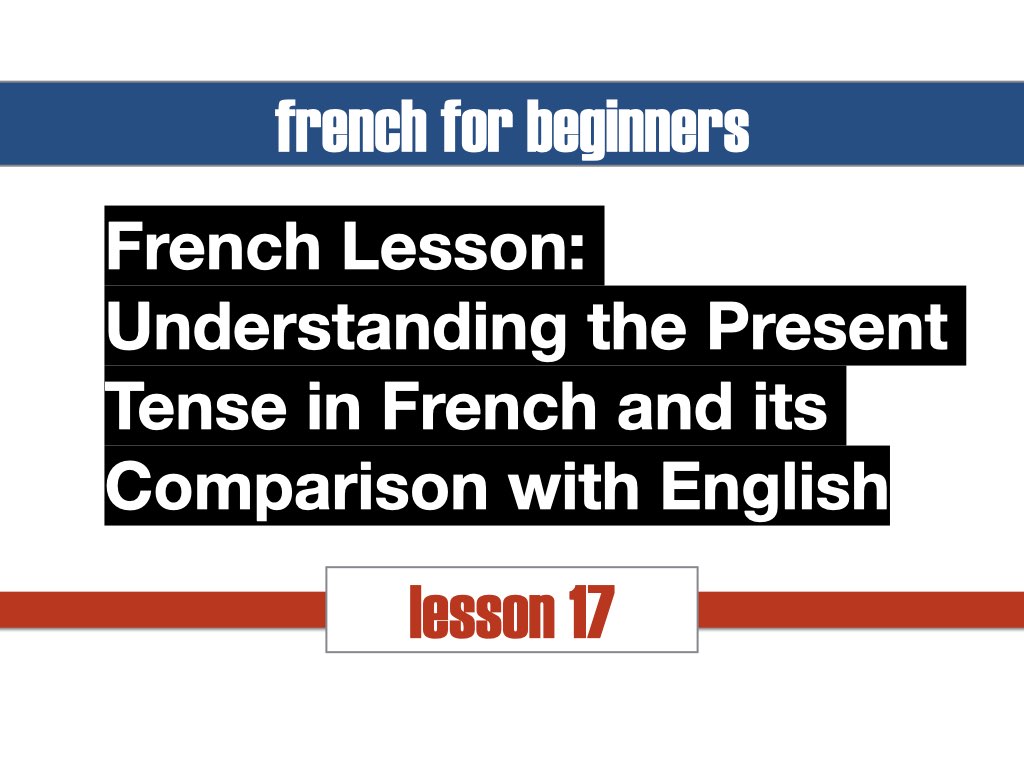French Lesson: Understanding the Present Tense in French and its Comparison with English
Introduction
Welcome back, students! Today, we’re going to deepen our understanding of the p.t in French, and we’ll compare it with the present tense in English. This will help you grasp not just how to form the present tense, but also when and why to use it.
Understanding the Present Tense in French
In French, the present tense, known as “le présent,” is a versatile tense used in several contexts:
Current Actions:
Describes actions happening right now.
| French | English |
|---|---|
| Je mange. | I eat. / I am eating. |
| Tu lis un livre. | You read a book. / You are reading a book. |
| Nous écoutons de la musique. | We listen to music. / We are listening to music. |
Habitual Actions:
Describes regular, habitual actions.
| French | English |
|---|---|
| Il joue au tennis le samedi. | He plays tennis on Saturdays. |
| Elle nage tous les matins. | She swims every morning. |
| Ils étudient le français le lundi. | They study French on Mondays. |
General Truths:
States facts or general truths.
| French | English |
|---|---|
| L’eau bout à 100 degrés Celsius. | Water boils at 100 degrees Celsius. |
| Les oiseaux chantent. | Birds sing. |
| Le soleil se lève à l’est. | The sun rises in the east. |
Future Intentions (sometimes):
In French, the present tense can express near-future plans or intentions, which is not common in English.
| French | English |
|---|---|
| Je vais au cinéma ce soir. | I am going to the cinema tonight. |
| Nous partons demain matin. | We are leaving tomorrow morning. |
| Tu commences le travail la semaine prochaine. | You are starting work next week. |
Emotional States or Descriptions:
Expressing feelings or describing situations.
| French | English |
|---|---|
| Elle est heureuse. | She is happy. |
| Ils sont fatigués. | They are tired. |
| Le ciel est bleu. | The sky is blue. |
Differences Between French and English Present Tense
1. Continuous Actions:
-
- In English, we often use the present continuous (I am doing) to describe ongoing actions. French does not have a continuous tense; it uses the simple present for both ongoing and habitual actions.
- Example: Je lis un livre. (I am reading a book / I read a book.)
2. Near Future:
-
- As mentioned, French sometimes uses the P.T to express near-future actions, while English typically uses ‘going to’ or the present continuous.
- Example: Nous partons demain. (We are leaving tomorrow.)
📌 Note that it is possible to express the near future with the verb ‘aller’ followed by the infinitive.
3. Habitual Actions:
-
- Both languages use the P.T for habitual actions, but English often employs adverbs like ‘usually’ or ‘often’ for clarity.
- Example: Il regarde la télé tous les soirs. (He watches TV every evening.)
Conclusion
Understanding the nuances of the P.T in both French and English is essential for effective communication. Remember, while there are similarities, the usage can differ significantly, particularly with continuous actions and near-future intentions. Bonne chance! (Good luck!)


